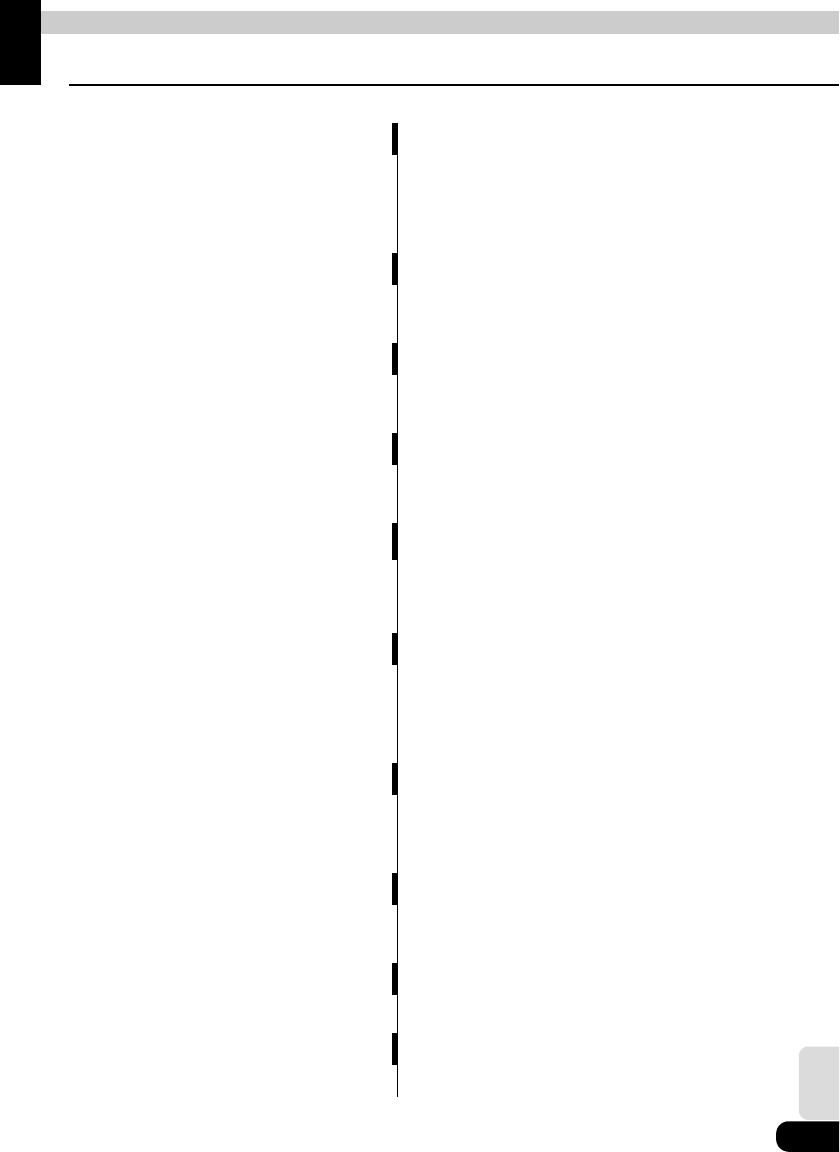User Guide
Table Of Contents
- How to use this manual
- Features
- DVD player with sharp video and dynamic sound (Page 94)
- The MP3/WMA player that can play a disc holding many music tracks equivalent to several albums (Page 72)
- DSP effects for simulating acoustics of various performance environments (Page 30)
- Selection and display of favorite wallpaper (screen backgrounds) (Page 44)
- Radio tuner for receiving various broadcasts
- System additions
- TEL MUTE
- Easy-access audio controls on the steering wheel (Page 140)
- Before using the main unit
- Switching mode
- Operation screen of each mode
- Adjusting the volume
- Adjusting sound quality
- Setting the background screen
- Adjusting the background screen
- Adjusting/setting the screen
- How to use the AM / FM radio
- How to use HD Radio
- How to use the SIRIUS satellite radio
- How to use the XM satellite radio
- How to use the CD player
- How to use the MP3/WMA player
- Playing MP3/WMA
- Selecting a music file
- Fast-forwarding/rewinding
- Changing display of the current level
- Displaying the current level
- Searching for a music file
- Repeating the same music file
- Playing songs in random order
- About display of file information
- Turning off the MP3/WMA player
- About MP3/WMA
- Making and playing MP3/WMA files
- How to use the CD changer
- Operating the iPod
- Before using the DVD player
- How to use the DVD player
- How to use the VTR
- How to use the TV
- How to use the DUAL PLAY
- Setting the rear seat monitor
- Operating the rear seat monitor
- How to play CD
- How to play MP3/WMA
- How to play DVD
- How to watch TV
- About the steering wheel switches
- How to use an optional remote control (RMC105)
- Information you should know
- Glossary
- Index by topic
- About screen and sound adjustment
- About Using AM/FM radio
- Usage when an HD Radio tuner is connected
- Usage when a SIRIUS satellite radio tuner is connected
- Usage when a XM satellite radio tuner is connected
- About using the CD player/CD changer
- About using the MP3/WMA player
- About using the iPod
- About using the DVD player
- About using the VTR
- About using the TV tuner
- Useful functions
- When something isn't clear
- INDEX

For reference
153
For reference
Glossary
CD-R
This is a disc that can only be recorded once.
Recorded data cannot be deleted. There are two
types of CD-R, one having capacity of 650MB
(74 minutes of music), the same as a regular CD,
and the other having capacity of 700MB (80
minutes of music).
(Compact Disc Recordable)
CD-DA
This disc is the standard for recording and
playing of music data. One track is recorded with
one song, and a maximum of 74 minutes can be
used with the CD.
(Compact Disc Digital Audio)
CD-RW
This disc uses a phase transformation method
that enables recording and deleting of data as
many times needed. Capacity is 700MB (80
minutes of music).
(Compact Disc ReWritable)
EQ (Equalizer)
This enables setting of stronger or softer playing
of sounds throughout the high to low range of the
sound. Levels can be adjusted to personal
preference, enhancing enjoyment of the music.
MP3
•
"MP3" is the abbreviation for "MPEG Audio Layer
3," which is the standard format for compression
of audio data. MP3 technology compresses
sound in the range inaudible to the human ear,
producing a file one tenth the size of the original.
(MPEG-1 Audio Layer-3)
LPCM
This is an abbreviation for Linear Pulse Code
Modulation, a signal recording method used with
music CDs. A music CD is recorded at 44.1kHz/
16 bit, but a DVD is recorded at 48kHz/16 bit ~
96kHz/24 bit, enabling a DVD to be played with
higher sound quality than a music CD.
(Linear PCM)
MPEG
This is an abbreviation for Moving Picture Experts
Group and is pronounced "empeg". It is the
international standard for moving image
compression. With DVDs, this method is also
used to compress and record digital audio.
Copy Control CD
This is a CD that has controls for preventing
computers from copying and ripping (taking
audio information recorded on a compact disc
and using it as data to create a file).
UDF
This is one format for use with optical discs not
reliant on the OS. It is used with media such as
DVD and CD-RW.
(Universal Disc Format)
Track
The single division for a song on a music CD is
called a track.










